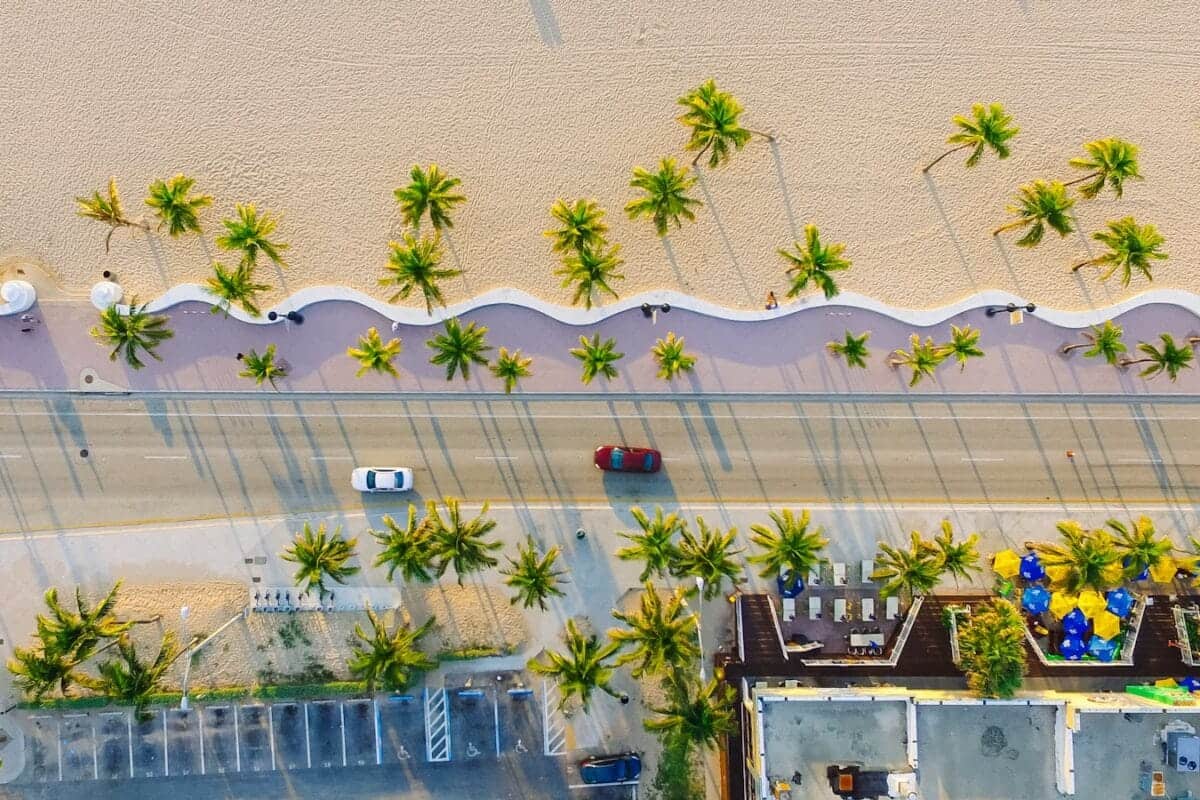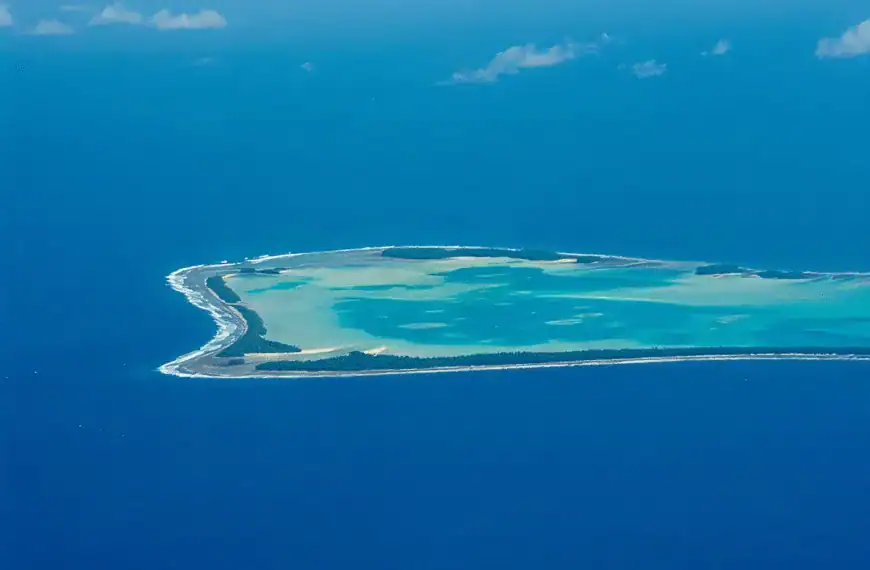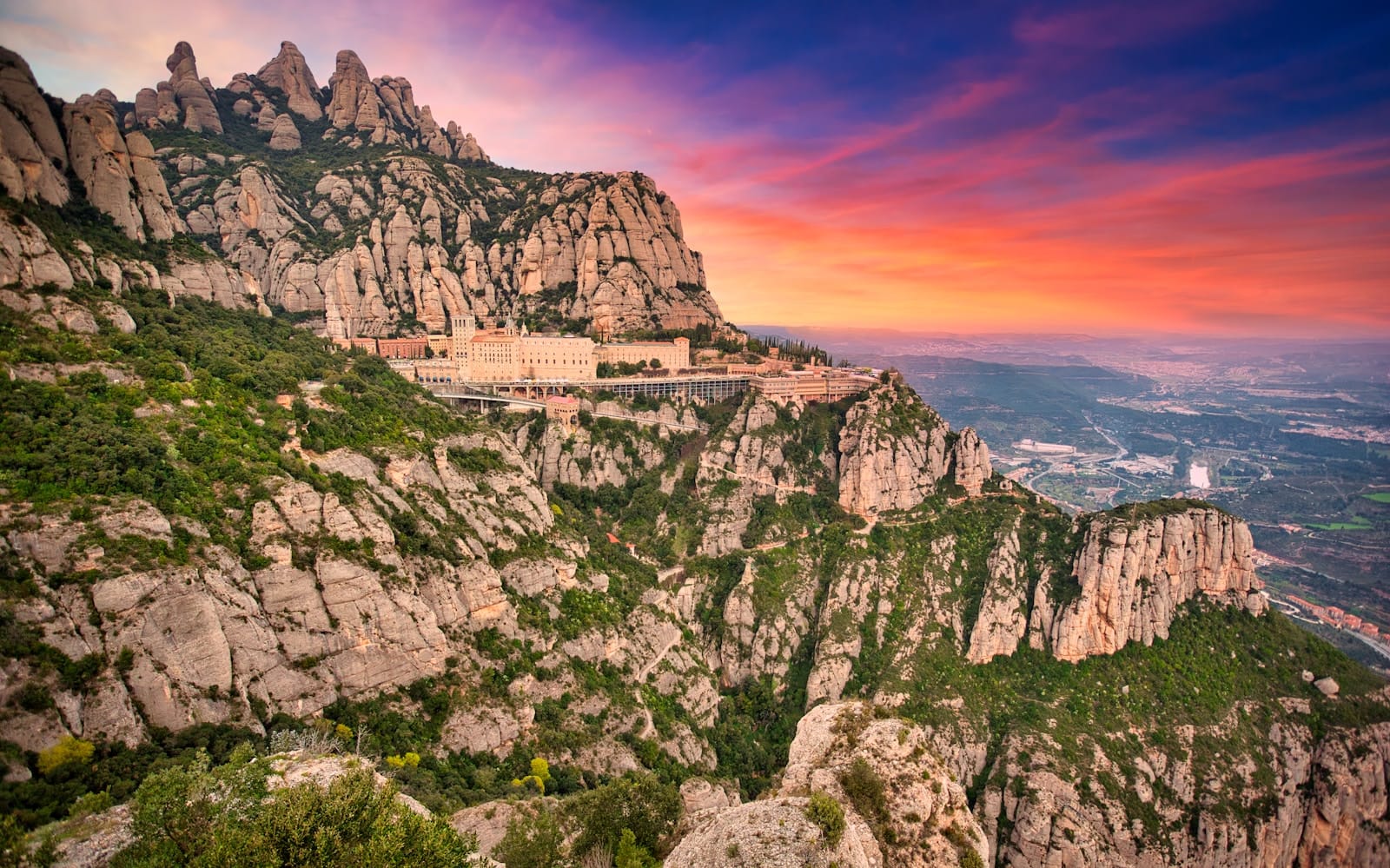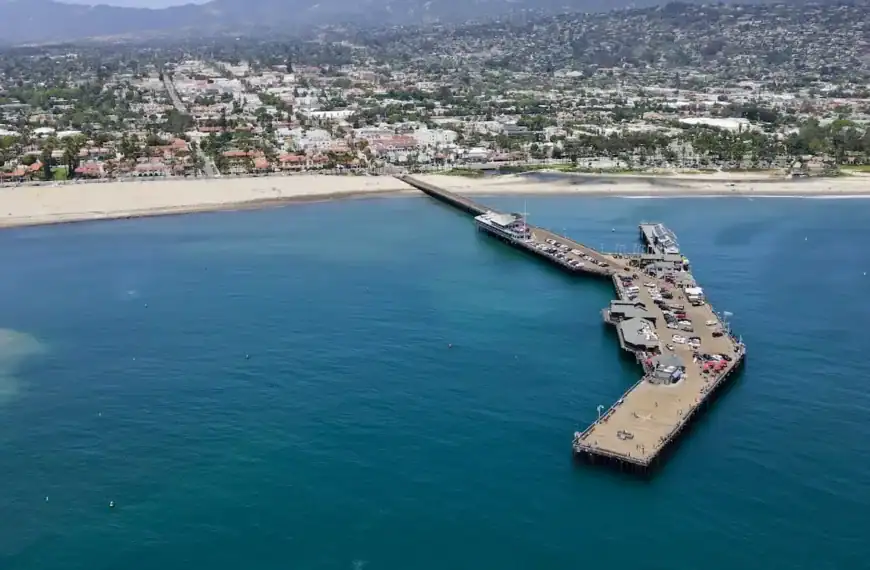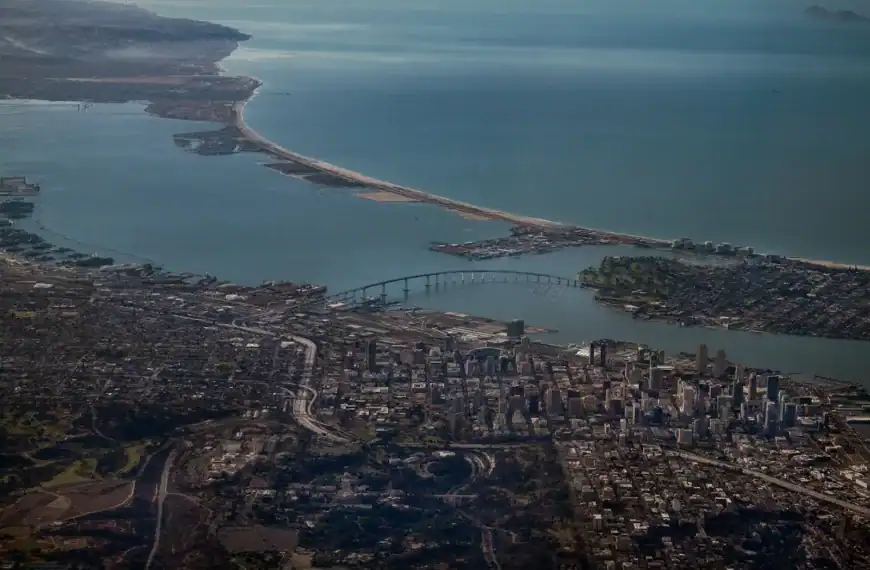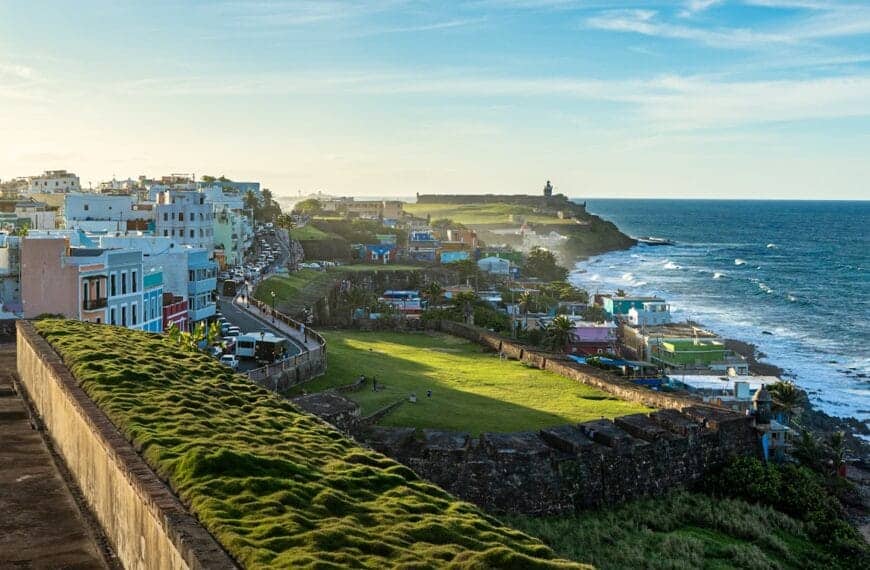Florida Travel Guide: Sunshine, Culture & Coastal Escapes
Intro to Florida Travel Guide
From the sun-soaked Keys to the springs of central Florida and the art deco energy of Miami, Florida is more than just beaches — it’s a dynamic mix of culture, ecology, and adventure. This state spans tropical islands, freshwater springs, theme parks, Everglades wilderness, and historic Southern towns.
Start planning your journey with our complete Florida Travel Guide — discover the best time to visit Florida, top attractions, diverse cities, scenic nature escapes, and unforgettable Florida tours to elevate your experience.
You’ll find the most iconic things to do in Florida alongside insider tips for less-traveled spots — all tailored for families, solo adventurers, and culture lovers alike.
Places to Visit in Florida
Amelia Island | Apalachicola | Boca Raton | Clearwater | Cocoa Beach | Daytona Beach | Destin | Fernandina Beach | Florida Keys | Fort Lauderdale | Fort Myers | Gainesville | Islamorada | Jacksonville | Key Largo | Key West | Kissimmee | Marco Island | Miami | Naples | Ocala | Orlando | Palm Beach | Panama City Beach | Pensacola | Sarasota | St. Augustine | St. Petersburg | Tallahassee | Tampa | Vero Beach | West Palm Beach | Winter Park
💡Quick Facts:
Destination: Florida
Continent: North America
Country: United States
State: Florida
Area: 170,312 km² (65,758 sq mi)
Population: ~22 million
Density: ~145/km²
Capital: Tallahassee
Regions/Subregions: Panhandle, North Florida, Central Florida, South Florida, Florida Keys
Official & Regional Languages: English (official), Spanish widely spoken
Currency: United States Dollar (USD, $)
Time Zone(s): Eastern Time (UTC-5/UTC-4 DST); Central Time in Panhandle (UTC-6/UTC-5 DST)
Airports: Miami International (MIA), Orlando International (MCO), Tampa International (TPA), Fort Lauderdale-Hollywood (FLL), Jacksonville International (JAX)
Climate: Mostly humid subtropical in north/central; tropical in south and Keys; hurricane season June–November
Known For: Beaches, Everglades, theme parks (Disney World, Universal Orlando), space industry (Kennedy Space Center), cruise ports
🛂Arrival Info:
United States entry rules apply — ESTA required for visa waiver countries.
Visa Waiver Program allows 90-day stays for eligible passport holders.
Standard B-2 tourist visas for other nationalities.
Official visa portal: U.S. State Dept – Travel
Customs and border info: U.S. Customs and Border Protection
🏥Health Info:
No mandatory vaccines; routine immunizations recommended.
Mosquito-borne illnesses possible in summer (dengue, Zika, West Nile).
Excellent hospital and urgent care coverage in major metro areas.
International travelers can access English-speaking clinics in Miami, Orlando, Tampa.
Travel insurance strongly advised due to high healthcare costs.
🚑 Check travel insurance options for travel emergencies, delays, and medical needs abroad — Get coverage here
💉 Stay Informed with Official Updates: WHO – International Travel & Health | CDC – Travel health updates
🚨Travel Advisory:
Florida is generally safe for visitors.
Risks: hurricanes (Jun–Nov), rip currents, heatstroke in summer.
Petty theft can occur in tourist areas and beaches.
🌍Track Real-Time Official Updates: US Travel Advisory | UK Foreign Travel Advice | Government of Canada
🥳Holidays:
New Year’s Day – 1 January
Independence Day – 4 July
Thanksgiving – 4th Thursday in November
Christmas Day – 25 December
Florida-specific: Gasparilla Festival (Tampa, Jan), Miami Carnival (Oct), Daytona 500 (Feb)
💰Visitor Info:
Currency: USD ($).
Cards accepted almost everywhere; cash useful for small vendors and tolls.
ATMs widely available.
Tipping: 15–20% standard at restaurants; $1–2 per drink for bartenders.
Tourist development taxes on hotels (5–6% county dependent).
Average daily budget:
Budget: $80–120
Midrange: $150–250
Luxury: $300+
🛫Airports:
MIA – Miami International: Largest Florida gateway for Latin America and Europe
MCO – Orlando International: Closest to theme parks; major hub for U.S. and international flights
FLL – Fort Lauderdale-Hollywood: Budget-friendly alternative to Miami
TPA – Tampa International: Efficient and well-rated for Gulf Coast access
JAX – Jacksonville Intl: Best for North Florida and Georgia border access
Others: PBI (Palm Beach), RSW (Fort Myers), ECP (Panama City), DAB (Daytona), SRQ (Sarasota)
🧳 Delayed or canceled flight? Check if you’re eligible for compensation
🚍Transport:
Car rental is most practical due to spread-out cities and attractions.
Interstate network: I-95, I-75, I-4 connect major cities.
Rail: Brightline high-speed trains connect Miami–Orlando. Amtrak links Jacksonville, Orlando, Miami.
Public transport limited; buses in metro areas, Miami Metrorail.
Uber, Lyft, taxis available in cities.
Ferry services connect mainland to Key West and Bahamas.
🚗 Book reliable airport transfers and in-city rides in advance. Reserve your ride here
🛰️Connectivity:
Strong nationwide mobile coverage; 5G in metro areas.
Carriers: AT&T, Verizon, T-Mobile.
Prepaid SIMs available at airports, Walmart, convenience stores.
Public Wi-Fi common in cafes, hotels, malls.
🛜 Stay connected abroad with affordable eSIM data packs. Get your eSIM here
📜Laws & Etiquette:
Drinking age: 21.
Smoking restricted indoors.
Alcohol sales hours vary by county.
Seatbelts required by law; DUI laws strictly enforced.
Beach rules: follow posted flags for water safety.
LGBTQ+ travelers welcomed in cities like Miami, Orlando, Key West; rural areas more conservative.
👮Emergency Info:
Emergency number: 911.
Hurricane warnings issued by National Hurricane Center.
Tourist police in Orlando and Miami Beach.
🏛️ Use embassy locator tools: Embassies Worldwide
🌞Weather:
Winter (Dec–Feb): Mild, 15–24°C; peak tourist season.
Spring (Mar–May): Warm, 20–30°C; good beach weather.
Summer (Jun–Aug): Hot, humid, 27–35°C; frequent thunderstorms.
Autumn (Sep–Nov): Hurricane risk, warm temps 20–30°C.
Best months: December–April for dry, mild conditions.
🌦️ Stay prepared—check the weather forecast for your destination — Weather Forecast
Florida Cities & Major Destinations
Florida’s cities are full of character, spanning beach life, Latin influence, family entertainment, and Old South history. Here’s where to begin:
- Miami – A global hotspot for nightlife, Latin flavor, and art deco design. Explore Little Havana, South Beach, and Wynwood Walls before day-tripping to the Everglades.
- Orlando – The theme park capital of the world, home to Walt Disney World, Universal Studios, and endless family resorts. Nearby Winter Park offers historic charm.
- Tampa Bay Area – Includes Tampa, St. Petersburg, and Clearwater. Known for its Gulf beaches, museums, and a growing culinary scene.
- Key West – The southernmost point in the U.S., with tropical vibes, coral reefs, literary history (Hemingway!), and Conch Republic flair.
- Jacksonville – Florida’s largest city by area, offering beaches, riverside parks, and a growing cultural downtown scene.
- Gainesville – Home to the University of Florida and a surprising number of nearby freshwater springs and forest hikes.
- Tallahassee – The state capital blends Southern Gothic style with government buildings, museums, and Spanish colonial roots.
- Naples & Fort Myers – Gulf coast towns offering upscale beach resorts, shelling, and wildlife access (like the nearby Ten Thousand Islands).
How to Choose Where to Go in Florida
Florida’s diversity makes it ideal for every kind of traveler. Here’s how to break it down:
- For Family Adventures – Central Florida is theme park central (Orlando, Kissimmee, Winter Haven).
- For Nature & Wildlife – South Florida offers the Everglades, Big Cypress, and Florida Bay. North and central Florida are dotted with crystal-clear springs and forests.
- For Beach Escapes – Gulf Coast = calm, warm waters (Sarasota, Clearwater); Atlantic = surf and nightlife (Daytona, Fort Lauderdale).
- For Culture & Nightlife – Miami, St. Pete, and Tampa boast world-class food, galleries, and Latin fusion nightlife.
- For Hidden Gems – Check out Apalachicola (oysters!), Cedar Key, and the Suwannee River corridor.
Florida is divided into North Florida, Central Florida, South Florida, and The Keys — each offering its own climate, vibe, and attractions.
Natural Escapes & Scenic Highlights
Despite its theme park fame, Florida is one of the most ecologically diverse states in the U.S. Here are the most inspiring natural Florida attractions:
- Everglades National Park – A massive subtropical wilderness where you can spot alligators, manatees, and endangered panthers on airboat tours or boardwalk trails.
- Florida Keys – Drive the scenic Overseas Highway and dive the coral reefs of Key Largo or snorkel Bahia Honda.
- Devil’s Den & Ginnie Springs – Prehistoric spring caverns perfect for diving, swimming, and kayaking near Gainesville.
- Dry Tortugas National Park – Accessible only by ferry or seaplane, this remote park is home to Fort Jefferson and pristine waters.
- Crystal River – Swim with manatees in clear, spring-fed rivers surrounded by natural preserves.
- Ocala National Forest – Hike through pine forests, paddle Juniper Springs, or camp under the stars.
- Sanibel & Captiva Islands – Known for white-sand beaches, shelling, and wildlife refuges.
Cultural & Historic Landmarks
Florida’s culture blends Native, Spanish, Caribbean, and American South influences. Here are must-see historic and cultural sites:
- St. Augustine – The oldest European city in the U.S., with cobblestone streets, Spanish forts, and centuries-old churches.
- Vizcaya Museum & Gardens (Miami) – A Mediterranean Revival mansion full of antiques and romantic gardens.
- Little Havana (Miami) – Sip Cuban coffee, watch dominoes, and hear salsa on Calle Ocho.
- Ernest Hemingway Home (Key West) – Visit the famous author’s house and its legendary six-toed cats.
- Ringling Museum (Sarasota) – Art collections and circus history in a Venetian-style mansion.
- Seminole Tribe Sites – Explore Big Cypress Reservation and the Ah-Tah-Thi-Ki Museum for Native history and heritage.
- Castillo de San Marcos (St. Augustine) – An impressive 17th-century coquina stone fortress.
- Fort Zachary Taylor (Key West) – Offers Civil War history and one of the best beaches in the Keys.
Local Food, Arts & Experiences
From Gulf seafood to citrus groves and street festivals, Florida’s flavor is as bright as its skies:
- Key Lime Pie – Tart, sweet, and best enjoyed in Key West.
- Cuban Sandwiches & Croquetas – A Miami staple along with guava pastries and Cuban coffee.
- Stone Crab Season (Oct–May) – A delicacy along the Gulf Coast.
- Food Festivals – Epcot’s International Food & Wine Fest, South Beach Wine & Food Festival, and more.
- Art Walks & Street Fairs – Wynwood (Miami), First Friday St. Pete, Art Basel, and more.
- Live Music – Find reggae in the Keys, jazz in Jacksonville, and Latin beats everywhere in between.
- Fishing & Boating – Charter a boat in Islamorada or join a freshwater fishing tour inland.
Must-See Experiences in Florida
Here are 6 unforgettable experiences across the state:
- Snorkel coral reefs in John Pennekamp Coral Reef State Park
- Kayak with manatees in Blue Spring State Park
- Walk historic streets and forts in St. Augustine
- Ride an airboat across the Everglades River of Grass
- Catch a rocket launch at Kennedy Space Center
- Watch the sunset from Mallory Square in Key West
Book immersive Florida tours and experience unforgettable things to do in Florida — from sacred spring rituals and coral reef dives to sunset cruises and tropical island adventures.
Getting Around Florida
Florida’s long shape and regional diversity make transportation planning key to a smooth trip.
- By Car – Renting a car is the most efficient way to explore, especially if you’re visiting parks, beaches, or small towns outside of metro areas.
- High-Speed Rail – Brightline connects Miami, Fort Lauderdale, West Palm Beach, and now Orlando with clean, fast, and affordable trains.
- Airports – Major hubs include MIA (Miami), MCO (Orlando), TPA (Tampa), FLL (Fort Lauderdale), and JAX (Jacksonville).
- Buses & Shuttles – Greyhound, FlixBus, and RedCoach offer intercity service, while many airports offer hotel shuttles and regional links.
- Public Transit – Miami-Dade Transit, LYNX (Orlando), and HART (Tampa) provide metro area coverage, but not for statewide travel.
- Ferries – Use ferry services for Dry Tortugas, Key West Express (from Fort Myers), or Gulf island hopping.
Tip: Avoid driving during rush hour in Miami, Orlando, and Tampa. Also, toll roads are common — consider a SunPass for faster travel.
Best Time to Visit Florida
Florida’s subtropical climate means sunshine year-round, but each season offers something unique.
- Winter (Dec–Feb) – Best for snowbirds and holiday travel. Cooler temps (60s–70s) and dry skies. Peak season in South Florida.
- Spring (Mar–May) – Arguably the best time to visit Florida for balance: fewer crowds, perfect beach weather, spring break energy.
- Summer (Jun–Aug) – Hot and humid with frequent afternoon rain. Great for budget travelers and theme park deals, but watch for hurricanes.
- Fall (Sep–Nov) – Shoulder season. Fewer crowds and lower prices, but late summer storms and high temps linger through September.
Special timing:
- Manatee season – Winter (Nov–Mar) in Crystal River and Blue Spring
- Stone crab season – October to May
- Hurricane season – June to November (peak: August–October)
Best Travel Itineraries in Florida
Here are sample itineraries designed for different travel styles:
5-Day South Florida Escape
- Day 1–2: Miami (Wynwood, Little Havana, South Beach)
- Day 3: Everglades + airboat tour
- Day 4: Drive to Key Largo, snorkel coral reefs
- Day 5: Key West sunset + historic sites
7-Day Gulf Coast Loop
- Day 1: Tampa
- Day 2: St. Pete + Clearwater
- Day 3–4: Sarasota + Sanibel
- Day 5: Naples + Ten Thousand Islands
- Day 6–7: Fort Myers + ferry to Key West (optional)
10-Day Family + Culture Combo
- Days 1–3: Orlando theme parks
- Day 4: Kennedy Space Center
- Days 5–6: St. Augustine
- Days 7–8: Gainesville springs + manatee swim
- Days 9–10: Tampa or Miami for food and beaches
Travel Safety & Etiquette in Florida
Florida is generally safe for travelers, but local conditions vary. Here’s how to stay aware:
- Wildlife – Never feed alligators or manatees. Keep distance and don’t touch marine life while snorkeling.
- Heat & Sun – Hydrate, wear SPF, and take breaks. Heat stroke and sunburn are common issues for unprepared visitors.
- Driving – Drive defensively and watch for toll roads. Speed limits vary; photo tickets are common.
- Hurricanes – Always check storm warnings between June and November.
- Cultural Etiquette – South Florida has a diverse Latin influence; English and Spanish are widely spoken. Dress modestly in small towns or religious areas.
- Spring Break Behavior – In peak party zones (Daytona, Panama City Beach), expect rules about alcohol, loud music, and crowd control.
Nearby States to Visit After Florida
- Georgia – Just north of Jacksonville, explore Savannah’s historic streets or Atlanta’s museums and civil rights sites.
- Alabama – Head west to visit Mobile’s Mardi Gras culture or Gulf Shores beaches.
- South Carolina – Add Charleston for antebellum architecture and Atlantic charm.
- Mississippi – Road trip through the Deep South’s blues trail and food traditions.
- Louisiana – Extend west to New Orleans for a cultural feast of Creole flavor and French Quarter fun.
Final Planning Checklist for Florida
- Book theme park tickets and Florida tours in advance during peak travel seasons
- Pack quick-dry clothes, water shoes, reef-safe sunscreen, and a rain poncho
- Hydrate more than usual — heat and humidity can sneak up fast
- Download offline maps for nature areas and national parks
- Carry cash for toll roads, beach parking, and small island shops
- Watch tide times for shelling, kayaking, and beach access
- Double-check ferry schedules and hurricane updates if traveling from June–October
- Respect wildlife zones and do not touch coral or marine mammals
- Combine Gulf Coast and Atlantic Coast for the full Florida contrast
- Use Brightline for efficient city travel without a car
For more expert travel tips, practical strategies, and trusted tools — visit our Homepage and get inspired for your next trip.

